22 Nights / 23 Days

Flight from London to Antananarivo, after the different procedures, welcoming and greetings and then transfer to your hotel. Day at leisure : possibility to walk around the hotel. Overnight on half board at RELAIS DES PLATEAUX.
Breakfast, then transfer to the airport for the flight to Maroantsetra. Welcoming and greeting, transfer to the harbour afterwards. Boat ride over the Antongil bay about 02 hours. Possibility of dolphin sightings and the forested mountains of the Masoala Peninsula. Check-in at your lodge. After lunch, beginning of the activities : to explore the beaches and coastal surrounding of the lodge, swimming before taking a guided walk with the possibility of spotting birds, lemurs (white fronted brown lemurs, the red ruffed lemurs…), dwarf chameleon,and plants (palms, orchids,….) in the coastal forest. Overnight at MASOALA FOREST LODGE on all inclusive for 03 nights.
Two days spent in Masoala rainforest to discover the flora and fauna, especially the birds as the blue Vanga, the Helmet Vanga, the Bernie's Vanga, the blue Coua, the Crested Coua, the Red Owl, or the Serpent Eagle….).Tampolo river by traditional pirogue; guided sea kayak; to swim or to do snorkeling in the Tampolo marine Park; night walk to discover some nocturnal wildlife such as Leaf-tailed Gecko, Dwarf and Mouse lemurs and maybe even the elusive Aye-Aye.
Two days spent in Masoala rainforest to discover the flora and fauna, especially the birds as the blue Vanga, the Helmet Vanga, the Bernie's Vanga, the blue Coua, the Crested Coua, the Red Owl, or the Serpent Eagle….).Tampolo river by traditional pirogue; guided sea kayak; to swim or to do snorkeling in the Tampolo marine Park; night walk to discover some nocturnal wildlife such as Leaf-tailed Gecko, Dwarf and Mouse lemurs and maybe even the elusive Aye-Aye.
Breakfast, then boat transfer to Maroantsetra. If time allows, visit of Nosy Mangabe reserve, and flight back to Antananarivo. Transfer to your hotel. Overnight on half board at RELAIS DES PLATEAUX.
Breakfast at the hotel. Morning at leisure. After lunch, transfer to the airport and flight to Toliara. Meeting at the airport and then drive to Ifaty. Late arrival in the afternoon. Overnight on half board at DUNES HOTEL in a villa for 02 nights.
Early Breakfast at the hotel. Birdwatching at the Reniala spiny forest. Possibility of spotting the Long tailed ground roller, the subdesert Mesite, the green capped Coua, the subdesert Warbler, the thamnornis Warbler, the common Newtonia, the archbold Newtonia, the striped throated Jery, the Sickle billed Vanga, the chabert Vanga…… Back to the hotel after the visit. Lunch at the hotel.
Possibility to embark on a second visit to the Reniala spiny forest at the hotel for the rest of your journey or you can enjoy yourself of spotting birds in the spiny forest surrounding the hotels.
Early breakfast and departure to Andatabo site, a home of Red-shouldered Vanga which is the most recently described endemic to Madagascar. We will also search for Grey-headed Lovebird and Verreaux's Coua. We may even be lucky with Madagascar Sandgrouse at one of their regular drinking points. The mudflats around Toliara are great for all sorts of waders, Saunder's Tern and possibly Humblot's Heron.
Continuation to Zombitse National Park, in order to arrive before it gets too hot. Cuckoo-rollers displaying over the canopy is one of the highlights here. Males of this huge forest endemic engage in flapping displays and loops accompanied by their shrieking whistles. Appert's Greenbul one of Madagascar's rarest endemics birds can be ranked among the specificity of this forest. This highly threatened species is restricted to Zombitse and a small adjacent forest patch. Here we could also find Coquerel's and Giant Couas, Rufous Vanga and Stripe-throated Jery. The forest is a very special transition zone between the south's flora and the western deciduous forest (which we will explore in Ankarafantsika National Park). Similar in appearance as the latter, it contains the former baobab species. We will continue on the long drive to Isalo's remarkable landscape: eroded 'ruiniforme' sandstone outcrops, with hints of silver and green reflections of sunlight and interspersed with endless palm savanna. Surrounded by the spectacular mountains of the Isalo massif, we will stay at one of Madagascar's most scenic places. Key target birds this evening and the following morning will include Madagascar Partridge, Torotoroka Scops-owl, White-browed Owl and Benson's Rock-thrush (although noticeably different in plumage and structure, this species is now often considered to be conspecific with the Forest Rock-thrush from further east).
This morning, will offer another chance to target our key birds, before travelling northwards towards Ranomafana’s rainforest. On this spectacularly scenic long drive, we’ll search for the elegant Madagascar Harrier then have a picnic lunch at Anja, a protected and sacred forest which may offer us splendid photographic opportunities of the very social and charismatic Ring tailed lemur. Our drive during the late afternoon will progressively be through more forested terrain until we’ll reach our first rainforest destination: Ranomafana national park. We will arrive at our accommodation just before dark and take a stroll around to prepare for the next day’s early start.
We'll have three full days in this very important rainforest area. Ranomafana was set aside to protect one of the largest remaining rainforest patches of eastern Madagascar. It is a superb area, holding 39200 ha of mid-altitude rainforest and higher-altitude mountain cloud forest. A new species of lemur, the Golden Bamboo Lemur, was discovered here as recently as 1986, and this is the best place to seek one of the world's rarest primate species, the Greater Bamboo Lemur! We'll explore the excellent network of paths through the forests and dense stands of giant bamboo. Birding is excellent, and we'll see a lot of new species as this is the first time that we'll be exploring this rich habitat, home to most of Madagascar's endemicities. Awe-striking birds that we may encounter Ground-roller, White-throated Oxylabes, Crossley's Babbler, Green and Wedge-tailed Jerys and Tylas Vanga. We'll also search for the more retiring Madagascar Wood-rail, Brown Mesite, Madagascar Ibis and Henst's Goshawk. We will also explore Vohiparara, a nearby high altitude site of mossy cloud forest that includes forest trails and a small marsh. This is the best site in the world to get to grips with asitys, a brightly-coloured family of birds endemic to Madagascar that are related to the broadbills. The undisputed and special species here is the threatened Yellow-bellied Asity, which will be a major focus of the walk. We'll prick our ears for sign of its soft call, and search special places along the trail where its flavored flowers will be in bloom. We'll also look out for Sunbird Asity and fruit-eating Velvet Asity (with its bright green head wattles). Rufous-headed Ground-roller and Cryptic Warbler (discovered in 1996!) exist here as well. Other excellent birds are Pollen's Vanga, Grey-crowned Greenbul, and Forest Rock-thrush. Yellow-browed Oxylabes and Brown Emu-tail are highly secretive and we'll have to work hard to get a good view of these mega-skulkers. Marsh restricted specials such as Grey Emu-tail and Madagascar Snipe could be found in the ever smaller patches of habitat. We have even seen the declining Meller's Duck here a number of times, but we'd need to be very fortunate to see this declining species as it dwindles into extinction. A nearby river holds Madagascar Pratincoles and we've been lucky enough to discover a breeding site. This is a hotspot for lemur diversity and Ranomafana spots 12 species, including the spectacular red-eyed Milne-Edwards's Sifaka and the endangered Golden and Greater Bamboo Lemurs. During our nocturnal visit we'll likely get very close views of Brown Mouse Lemur. If we are very lucky, we may see Malagasy Striped Civet even if we often see Ring-tailed Mongoose during the day.
We'll have three full days in this very important rainforest area. Ranomafana was set aside to protect one of the largest remaining rainforest patches of eastern Madagascar. It is a superb area, holding 39200 ha of mid-altitude rainforest and higher-altitude mountain cloud forest. A new species of lemur, the Golden Bamboo Lemur, was discovered here as recently as 1986, and this is the best place to seek one of the world's rarest primate species, the Greater Bamboo Lemur! We'll explore the excellent network of paths through the forests and dense stands of giant bamboo. Birding is excellent, and we'll see a lot of new species as this is the first time that we'll be exploring this rich habitat, home to most of Madagascar's endemicities. Awe-striking birds that we may encounter Ground-roller, White-throated Oxylabes, Crossley's Babbler, Green and Wedge-tailed Jerys and Tylas Vanga. We'll also search for the more retiring Madagascar Wood-rail, Brown Mesite, Madagascar Ibis and Henst's Goshawk. We will also explore Vohiparara, a nearby high altitude site of mossy cloud forest that includes forest trails and a small marsh. This is the best site in the world to get to grips with asitys, a brightly-coloured family of birds endemic to Madagascar that are related to the broadbills. The undisputed and special species here is the threatened Yellow-bellied Asity, which will be a major focus of the walk. We'll prick our ears for sign of its soft call, and search special places along the trail where its flavored flowers will be in bloom. We'll also look out for Sunbird Asity and fruit-eating Velvet Asity (with its bright green head wattles). Rufous-headed Ground-roller and Cryptic Warbler (discovered in 1996!) exist here as well. Other excellent birds are Pollen's Vanga, Grey-crowned Greenbul, and Forest Rock-thrush. Yellow-browed Oxylabes and Brown Emu-tail are highly secretive and we'll have to work hard to get a good view of these mega-skulkers. Marsh restricted specials such as Grey Emu-tail and Madagascar Snipe could be found in the ever smaller patches of habitat. We have even seen the declining Meller's Duck here a number of times, but we'd need to be very fortunate to see this declining species as it dwindles into extinction. A nearby river holds Madagascar Pratincoles and we've been lucky enough to discover a breeding site. This is a hotspot for lemur diversity and Ranomafana spots 12 species, including the spectacular red-eyed Milne-Edwards's Sifaka and the endangered Golden and Greater Bamboo Lemurs. During our nocturnal visit we'll likely get very close views of Brown Mouse Lemur. If we are very lucky, we may see Malagasy Striped Civet even if we often see Ring-tailed Mongoose during the day.
We'll have three full days in this very important rainforest area. Ranomafana was set aside to protect one of the largest remaining rainforest patches of eastern Madagascar. It is a superb area, holding 39200 ha of mid-altitude rainforest and higher-altitude mountain cloud forest. A new species of lemur, the Golden Bamboo Lemur, was discovered here as recently as 1986, and this is the best place to seek one of the world's rarest primate species, the Greater Bamboo Lemur! We'll explore the excellent network of paths through the forests and dense stands of giant bamboo. Birding is excellent, and we'll see a lot of new species as this is the first time that we'll be exploring this rich habitat, home to most of Madagascar's endemicities. Awe-striking birds that we may encounter Ground-roller, White-throated Oxylabes, Crossley's Babbler, Green and Wedge-tailed Jerys and Tylas Vanga. We'll also search for the more retiring Madagascar Wood-rail, Brown Mesite, Madagascar Ibis and Henst's Goshawk. We will also explore Vohiparara, a nearby high altitude site of mossy cloud forest that includes forest trails and a small marsh. This is the best site in the world to get to grips with asitys, a brightly-coloured family of birds endemic to Madagascar that are related to the broadbills. The undisputed and special species here is the threatened Yellow-bellied Asity, which will be a major focus of the walk. We'll prick our ears for sign of its soft call, and search special places along the trail where its flavored flowers will be in bloom. We'll also look out for Sunbird Asity and fruit-eating Velvet Asity (with its bright green head wattles). Rufous-headed Ground-roller and Cryptic Warbler (discovered in 1996!) exist here as well. Other excellent birds are Pollen's Vanga, Grey-crowned Greenbul, and Forest Rock-thrush. Yellow-browed Oxylabes and Brown Emu-tail are highly secretive and we'll have to work hard to get a good view of these mega-skulkers. Marsh restricted specials such as Grey Emu-tail and Madagascar Snipe could be found in the ever smaller patches of habitat. We have even seen the declining Meller's Duck here a number of times, but we'd need to be very fortunate to see this declining species as it dwindles into extinction. A nearby river holds Madagascar Pratincoles and we've been lucky enough to discover a breeding site. This is a hotspot for lemur diversity and Ranomafana spots 12 species, including the spectacular red-eyed Milne-Edwards's Sifaka and the endangered Golden and Greater Bamboo Lemurs. During our nocturnal visit we'll likely get very close views of Brown Mouse Lemur. If we are very lucky, we may see Malagasy Striped Civet even if we often see Ring-tailed Mongoose during the day.
Early breakfast and drive to Antananarivo. On the way, drive through Antsirabe, a very picturesque and interesting town historically known as the "place of much salt". It is renowned for its warm springs and thermal bath, its cool climate (at about 1500 m altitude) and having hundreds of registered rickshaw taxis. Arrival late in the evening. Accommodation on half board at ROVA HOTEL.
Breakfast at the hotel. You will drive to Majunga most important seaport. Arrival at the end of the day. We'll settle in for some good French cuisine, before our boat trip in the morning.
The Betsiboka River spills into the sea at a huge delta; one of the last refuges for some of Madagascar's most endangered endemics. This morning, our boat will take us along the coast and deep into the delta, in search of Bernier's Teal and Madagascar Ibis. Although numbers are low, we will hope to find both of these species feeding along the edge of the mangrove swamps in this area. Other possible species may include Crab Plover and Terek Sandpiper. Around midday, we will drive to Ankarafantsika National Park. After we settle in, we will start introductory birding around camp and, if time allows, head onto our first evening walk. Accommodation on half board at GITE D’Ampijoroa for 3 nights
Ankarafantsika National Park protects Madagascar's western dry deciduous woodlands on a gently undulating area of 20000 ha. It also contains Lake Ravelobe, where we'll search, on foot or by boat, for the critically endangered Madagascar Fish-eagle; far less common than its African counterpart (less than 50 pairs still exist!). Other species here include White-throated Rail and Madagascar Jacana. We will spend most of our time stalking through the woodlands, where top target birds will be the stunning Schlegel's Asity, White-breasted Mesite and Van Dam's Vanga. We also hope to find Madagascar Ibis, Madagascar Buttonquail, Madagascar Green-pigeon, Grey-headed Lovebird, Greater Vasa Parrot, Coquerel's and Red-capped Couas, Madagascar Scops-owl, Madagascar Pygmy Kingfisher, White-headed, Sickle-billed and Rufous Vangas as well as Madagascar Cuckoo-shrike. Night walks with local guides in search for nocturnal lemurs, owls and chameleons will be an exciting after-dinner activity. We often see a staggering 8 species of lemurs on the night walks here, including the recently-described Golden-brown Mouse Lemur and the localized Mongoose Lemur. Some of the largest specimens of Oustalet's Chameleon can also be seen here! Our accommodation will be at the Ampijoroa Research Station, in either simple bungalows or tents (subject to availability). As this accommodation is rather basic, our special catering team will time and again surprise us with excellent fresh and tropical meals.
Ankarafantsika National Park protects Madagascar's western dry deciduous woodlands on a gently undulating area of 20000 ha. It also contains Lake Ravelobe, where we'll search, on foot or by boat, for the critically endangered Madagascar Fish-eagle; far less common than its African counterpart (less than 50 pairs still exist!). Other species here include White-throated Rail and Madagascar Jacana. We will spend most of our time stalking through the woodlands, where top target birds will be the stunning Schlegel's Asity, White-breasted Mesite and Van Dam's Vanga. We also hope to find Madagascar Ibis, Madagascar Buttonquail, Madagascar Green-pigeon, Grey-headed Lovebird, Greater Vasa Parrot, Coquerel's and Red-capped Couas, Madagascar Scops-owl, Madagascar Pygmy Kingfisher, White-headed, Sickle-billed and Rufous Vangas as well as Madagascar Cuckoo-shrike. Night walks with local guides in search for nocturnal lemurs, owls and chameleons will be an exciting after-dinner activity. We often see a staggering 8 species of lemurs on the night walks here, including the recently-described Golden-brown Mouse Lemur and the localized Mongoose Lemur. Some of the largest specimens of Oustalet's Chameleon can also be seen here! Our accommodation will be at the Ampijoroa Research Station, in either simple bungalows or tents (subject to availability). As this accommodation is rather basic, our special catering team will time and again surprise us with excellent fresh and tropical meals.
After the breakfast, drive back to Antananarivo. Lunch on the way. Arrival late in the day. Accommodation on half board at RELAIS DES PLATEAUX.
After a good night's rest, drive to the Andasibe- Mantadia National Park. Upon arrival, you will start your first exploration. Check in at your hotel. Nocturnal visit for discovering nocturnal lemurs and chameleons. Accommodation on half board at VAKONA FOREST LODGE for 3 nights.
First day you will explore this spectacular wilderness. The protected area consists of the largest Mantadia National Park.. This protects one of Madagascar's most important primary rainforest areas. We have large time to explore the area thoroughly, on various trails and with local guides. We have an unexhausted list of birds , but some highlights may include White-throated Rail, Madagascar Flufftail, Madagascar Blue-pigeon, Lesser Vasa Parrot, Red-breasted, Blue and Red-fronted Couas, Madagascar Long-eared Owl, Madagascar Spine-tailed Swift, Madagascar Kingfisher, Cuckoo-roller, Sunbird Asity, Ward's Flycatcher, Dark Newtonia, Rand's Warbler, Madagascar Blue, Nuthatch and Pollen's Vangas, Madagascar Starling, Forest Fody and Nelicourvi Weaver. We may also be fortunate enough to encounter Collared Nightjar roosting almost imperceptibly on the forest floor. Mantadia is also the very best place in the world for Ground-rollers. We'll need some luck and perseverance, but we've seen all four rainforest species in a single morning: Pitta-like, Scaly, Rufous-headed and Short-legged Ground-roller. Despite this long list of endemics birds, there are few natural history experiences that can compare to the Indri's morning calls echoing through the misty forests. More than anything else, these echoing calls from the world's largest lemur sound like whales! The park also forms the ideal habitat for the iconic Black-and-white Ruffed Lemur and Diademed Sifaka.
On the 2nd day , you will have a full days to explore this spectacular wilderness. The protected area consists of the Anamalazaotra Special Reserve (also named Andasibe or the colonial name Perinet). This protects one of Madagascar's most important primary rainforest areas. We have large time to explore the area thoroughly, on various trails and with local guides. We have an unexhausted list of birds but some highlights may include White-throated Rail, Madagascar Flufftail, Madagascar Blue-pigeon, Lesser Vasa Parrot, Red-breasted, Blue and Red-fronted Couas, Madagascar Long-eared Owl, Madagascar Spine-tailed Swift, Madagascar Kingfisher, Cuckoo-roller, Sunbird Asity, Ward's Flycatcher, Dark Newtonia, Rand's Warbler, Madagascar Blue, Nuthatch and Pollen's Vangas, Madagascar Starling, Forest Fody and Nelicourvi Weaver. We may also be fortunate enough to encounter Collared Nightjar roosting almost imperceptibly on the forest floor. Lunch included
First day you will explore this spectacular wilderness. The protected area consists of the largest Mantadia National Park.. This protects one of Madagascar's most important primary rainforest areas. We have large time to explore the area thoroughly, on various trails and with local guides. We have an unexhausted list of birds , but some highlights may include White-throated Rail, Madagascar Flufftail, Madagascar Blue-pigeon, Lesser Vasa Parrot, Red-breasted, Blue and Red-fronted Couas, Madagascar Long-eared Owl, Madagascar Spine-tailed Swift, Madagascar Kingfisher, Cuckoo-roller, Sunbird Asity, Ward's Flycatcher, Dark Newtonia, Rand's Warbler, Madagascar Blue, Nuthatch and Pollen's Vangas, Madagascar Starling, Forest Fody and Nelicourvi Weaver. We may also be fortunate enough to encounter Collared Nightjar roosting almost imperceptibly on the forest floor. Mantadia is also the very best place in the world for Ground-rollers. We'll need some luck and perseverance, but we've seen all four rainforest species in a single morning: Pitta-like, Scaly, Rufous-headed and Short-legged Ground-roller. Despite this long list of endemics birds, there are few natural history experiences that can compare to the Indri's morning calls echoing through the misty forests. More than anything else, these echoing calls from the world's largest lemur sound like whales! The park also forms the ideal habitat for the iconic Black-and-white Ruffed Lemur and Diademed Sifaka.
On the 2nd day , you will have a full days to explore this spectacular wilderness. The protected area consists of the Anamalazaotra Special Reserve (also named Andasibe or the colonial name Perinet). This protects one of Madagascar's most important primary rainforest areas. We have large time to explore the area thoroughly, on various trails and with local guides. We have an unexhausted list of birds but some highlights may include White-throated Rail, Madagascar Flufftail, Madagascar Blue-pigeon, Lesser Vasa Parrot, Red-breasted, Blue and Red-fronted Couas, Madagascar Long-eared Owl, Madagascar Spine-tailed Swift, Madagascar Kingfisher, Cuckoo-roller, Sunbird Asity, Ward's Flycatcher, Dark Newtonia, Rand's Warbler, Madagascar Blue, Nuthatch and Pollen's Vangas, Madagascar Starling, Forest Fody and Nelicourvi Weaver. We may also be fortunate enough to encounter Collared Nightjar roosting almost imperceptibly on the forest floor. Lunch included
In the morning, explore the reserve of Antavolobe to discover the Helmeted Vanga. Then drive back to Antananarivo. Lunch in a restaurant. Overnight on halfboard at RELAIS DES PLATEAUX.
Breakfast at the hotel. In the morning visit of Tsararasaotra and then transfer to Ivato. Lunch in a restaurant and day use at Relais des Plateaux. transfer to the airport for the flight back home.
We are Dealing in Tour & Travels Services. Read More...
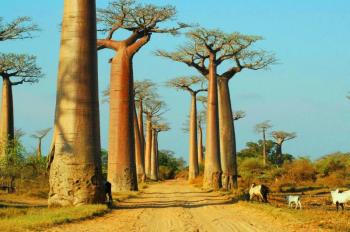 5D/4N
5D/4N
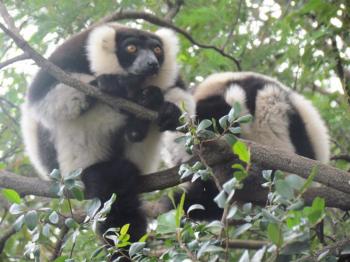 5D/4N
5D/4N
Discovering the Rainforest & Indri Indri..
Antananarivo - Northeast Madagascar
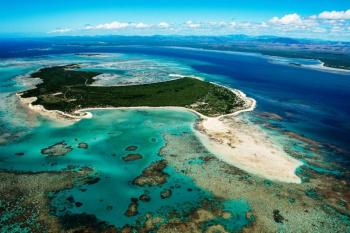 8D/7N
8D/7N
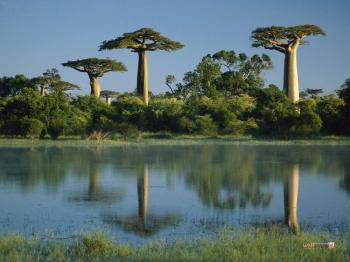 8D/7N
8D/7N
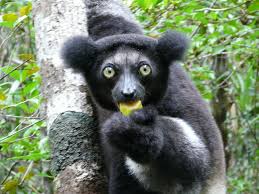 11D/10N
11D/10N
Encountering the Famous Indri Indri & Ay..
Antananarivo - Ile Sainte Marie - Cyrene - Chalchuapa
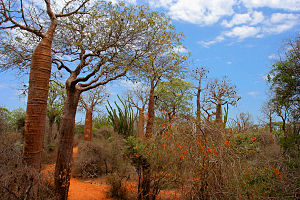 14D/13N
14D/13N
Lemurs, Baobabs & Spiny Forest Package
Antananarivo - BERENTY - KIRINDY - FORT
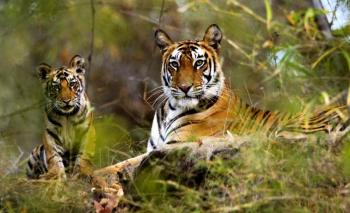 15D/14N
15D/14N
Antananarivo - Ranomafana - Toliara - Northeast Madagascar
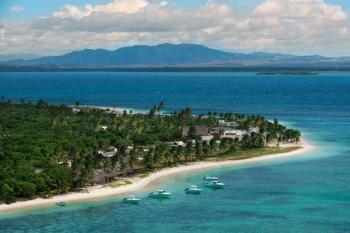 8D/7N
8D/7N
Madagascar Magical Island Package
Antananarivo - Morondava - BEKOPAKA - ANDASIBE
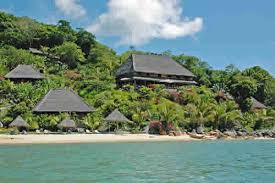 6D/5N
6D/5N
Rainforest and Nosy Saba Private Island ..
Antananarivo - ANDASIBE - NOSY SABA
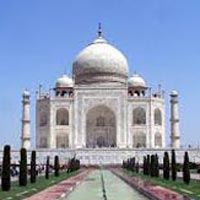 23D/22N
23D/22N
New Delhi - Jaipur - Nawalgarh - Mandawa - Bikaner - Jaisalmer - Osian - Khimsar - ..
 23D/22N
23D/22N
New Delhi - Amritsar - Dharamshala - Patnitop - Srinagar - Kargil - Leh Ladakh - Ma..
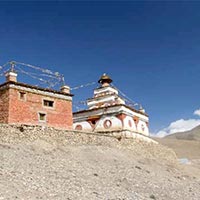 23D/22N
23D/22N
 23D/22N
23D/22N
 23D/22N
23D/22N
 23D/22N
23D/22N
 23D/22N
23D/22N
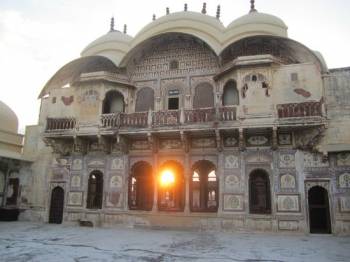 23D/22N
23D/22N
The Rural Tours of Rajasthan India
New Delhi - Samode - Nawalgarh - Khimsar - Jaisalmer - Jodhpur - Sirohi - Ranakpur ..
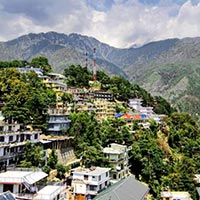 23D/22N
23D/22N
New Delhi - Manali - Kullu - Amritsar - Mcleodganj
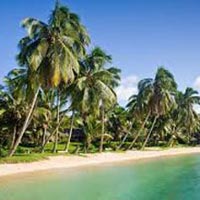 15D/14N
15D/14N
 16D/15N
16D/15N
Antananarivo - Antsirabe - Morondava - Fianarantsoa - Ambalavao - Ihosy - Miandriva..
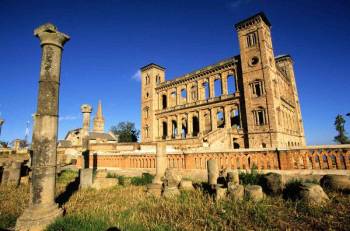 6D/5N
6D/5N
 9D/8N
9D/8N
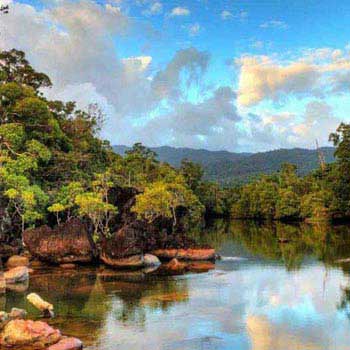 9D/8N
9D/8N
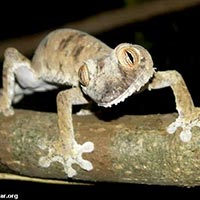 14D/13N
14D/13N
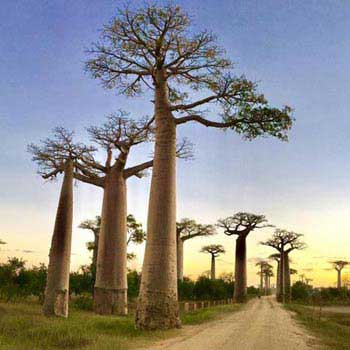 7D/6N
7D/6N
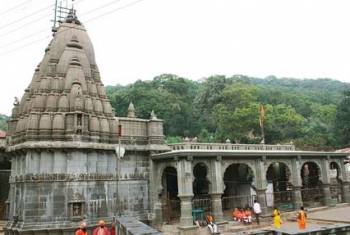 6D/5N
6D/5N
Maharashtra Jyotirlinga with Shirdi 6 D..
Mumbai - Ahmednagar - Ambajogai - Aurangabad - Shirdi - Maroantsetra - Femlet
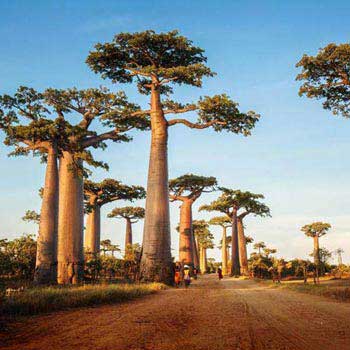 12D/11N
12D/11N